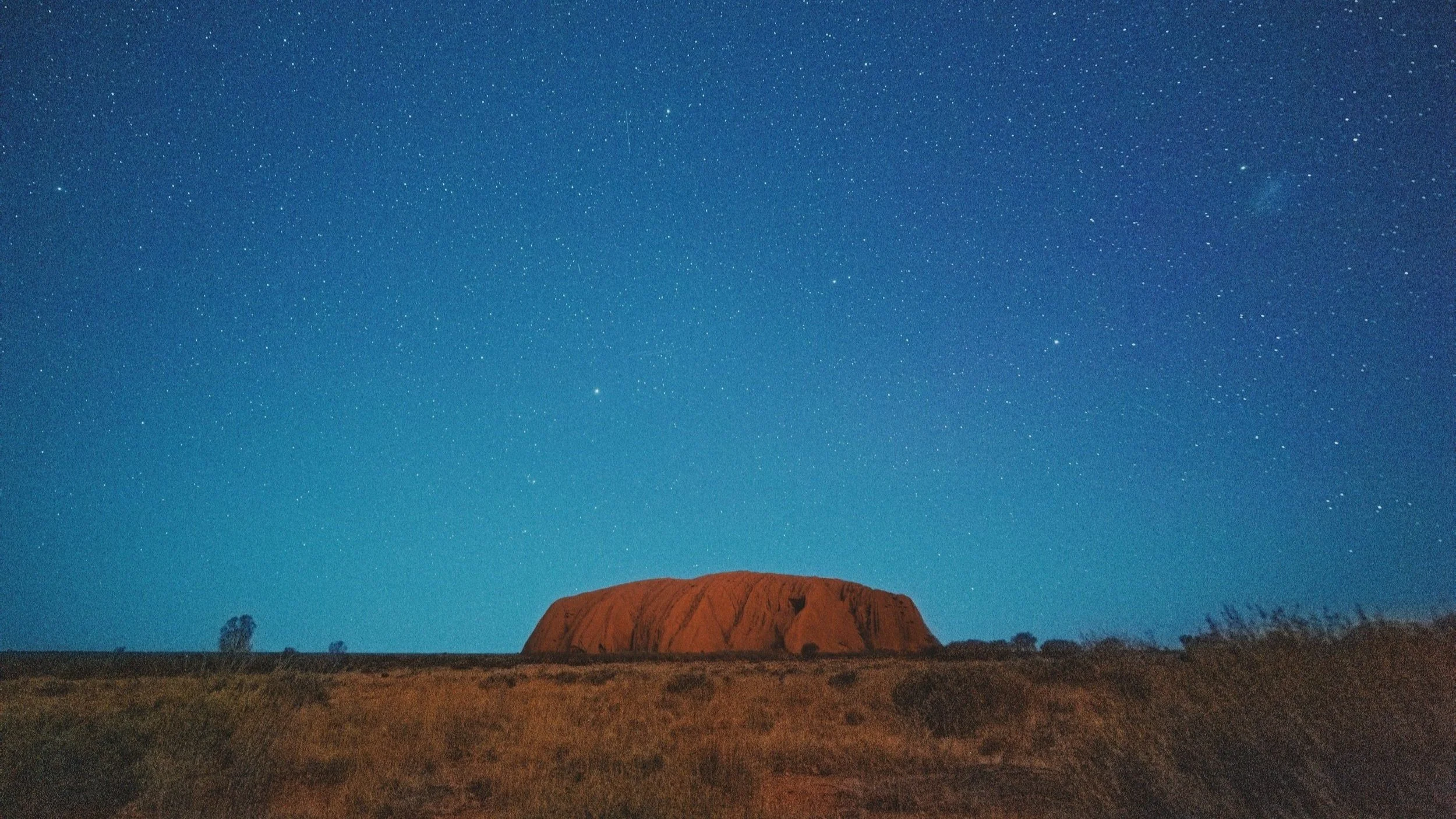
Uluru & Red Centre
Spiritual & Extraordinary
Venture into the heart of Australia with an unforgettable journey to the Uluru region in the Northern Territory! More than just a rock, Uluru is a deeply spiritual place, steeped in ancient Aboriginal culture and surrounded by breathtaking desert landscapes. Explore the awe-inspiring geological formations of Uluru-Kata Tjuta National Park, a UNESCO World Heritage site that promises an experience unlike any other.
Explore the magical Field of Light art installation, hike around the base of Uluru and through the domes of Kata Tjuta (The Olgas), or savor a gourmet dinner under the stars at the Sounds of Silence experience. Whether you seek adventure, cultural enrichment, or spiritual connection, the Uluru region promises lasting memories. Let us help you plan your journey to Red Centre!
Why We Love Uluru
-

The Landscape
The landscape of Uluru and the Red Centre is a breathtaking expanse of desert plains, weathered mountain ranges, and rocky gorges, punctuated by iconic natural landmarks such as Uluru (Ayers Rock) and Kata Tjuta (The Olgas). Uluru, a massive sandstone monolith rising 348 meters above the surrounding desert, is renowned for its ability to change colors throughout the day, glowing red at sunrise and sunset. Kata Tjuta, located 25 kilometers west of Uluru, features 36 domed rock formations that add to the region's dramatic scenery.
This stark yet beautiful environment is complemented by unique flora and fauna that have adapted to survive in the arid conditions of Central Australia.The Red Centre's landscape also includes ancient waterholes and natural springs, such as those found at Kings Canyon and Alice Springs. These oases provide a striking contrast to the arid surroundings. Visitors can explore the region through hiking trails, camel rides, or scenic flights that offer panoramic views of this extraordinary terrain.
The interplay of light and shadow across the desert creates an ever-changing visual experience, making it a once-in-a-lifetime destination for nature enthusiasts.
-

The Culture
The culture of Uluru and the Red Centre is deeply rooted in the traditions and stories of the Aṉangu people, who have lived in this area for tens of thousands of years. The Aṉangu consider Uluru and Kata Tjuta sacred sites, central to their spiritual beliefs and Dreamtime stories (Tjukurpa), which explain the creation of the land and its features. These stories are passed down through generations and are shared with visitors through guided tours led by Aṉangu custodians.
Cultural experiences include learning about traditional bush foods, Aboriginal art, and ancient storytelling practices. In addition to its Indigenous heritage, the region offers modern cultural experiences such as light installations like "Field of Light" and "Wintjiri Wiru," which blend traditional stories with contemporary art forms.
These immersive events highlight the importance of preserving Aboriginal culture while introducing it to a global audience in innovative ways. The Aṉangu people's connection to the land remains central to life in the Red Centre, offering visitors a profound appreciation for one of the world's oldest continuous cultures.
-

The History
Uluru's history spans tens of thousands of years as a sacred site for the Aṉangu people. Archaeological evidence suggests humans have inhabited this area for at least 30,000 years. According to Aṉangu beliefs, Uluru was formed during the Dreamtime by ancestral beings whose actions shaped the land. For centuries, these stories have guided Aṉangu life and their stewardship of this sacred landscape.
In 1985, after decades of European control, Uluru-Kata Tjuta National Park was returned to its traditional owners under a joint management agreement. European explorers first encountered Uluru in 1873 when William Gosse named it Ayers Rock after Sir Henry Ayers. Over time, tourism grew in popularity, with infrastructure being developed in the mid-20th century. However, climbing Uluru, a practice once common among tourists, was officially banned in 2019 out of respect for its cultural significance to the Aṉangu people.
Today, visitors are encouraged to appreciate Uluru’s rich history through cultural tours that honor its Indigenous heritage while learning about its geological and historical significance.
Our Favorite Things To Do
Sounds of Silence
Uluru Tour
Kata Tjuta Tour
Our Favorite Places To Stay
Longitude 131°
Longitude 131° provides guests an unparalleled luxury wilderness experience with tented pavilions offering direct views of Uluru, immersive cultural activities, and fine dining in Australia's Red Centre.
Sails in the Desert
A five-star oasis featuring luxurious rooms, Indigenous art, a relaxing spa, and easy access to Uluru’s iconic landscapes.
Desert Gardens Hotel
Comfortable accommodations surrounded by native gardens with stunning views of Uluru and convenient access to Ayers Rock Resort’s amenities.















